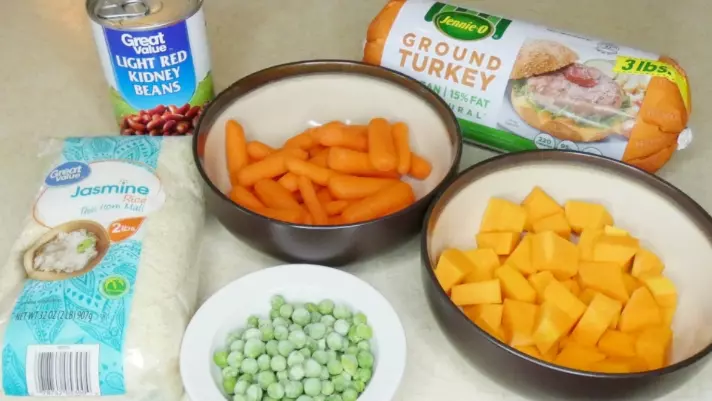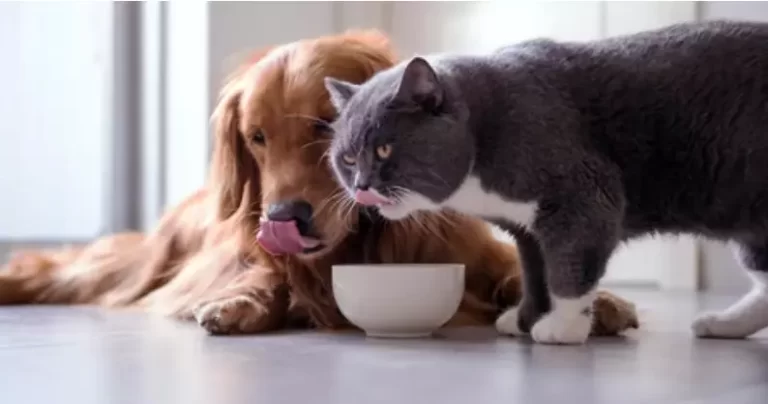Maltipoo Food Allergies – All You Need to Know
Table of Contents
You want to keep your Maltipoo safe from all types of allergic reactions and ensure that he gets the proper nutrition needed to maintain his health and vitality.
There are so many different brands available in the market; unfortunately, some of the brands are not safe for Maltipoos. However, choosing the best food brand can be a challenging and time-consuming truly hypoallergenic dog.
In this blog post, I am going to reveal some simple Maltipoo food allergies that you should know. This information will help you make the best choice when shopping for Maltipoo food, and you can then be sure that the foods you buy are suitable for this dog breed.
Let’s dive in…
Types of Allergies in Maltipoo
Maltipoo Food Allergies
Dogs that have food allergies frequently have an allergy to something they eat. Their responses might range from being modest to pretty severe.
Chicken and wheat are the two most typical triggers of food allergies in Maltipoo. They can be caused by the proteins found in chicken and wheat. These proteins can be a type of protein that is found in a wide variety of foods.
Dogs allergic to chicken tend to react to the proteins found in chicken eggs. These proteins are known as egg allergens. They are also found in chicken meat. Therefore, the proteins found in chicken meat can cause severe allergic reactions in dogs.
Dogs allergic to chicken meat also react to the proteins found in chicken fat.
Skin Allergies
This ailment develops when your dog comes into touch with something to which they are allergic. There is no known cause of this allergy. However, it is not uncommon in Maltipoos.
In most cases, contact allergies occur when a dog eats a diet containing raw meat. It is also possible to get a skin allergy when your dog is exposed to certain allergens through contact with your hands.
A dog with a skin allergy often exhibits symptoms after eating a particular diet. If you think your dog has a skin allergy, you should go to your veterinarian immediately. This disorder may be quite severe.
Therefore, your vet may recommend that your dog be tested for an allergy to raw meat and dairy products. The skin testing results will determine whether you need to remove these ingredients from your dog’s diet.
Environmental Allergies
Environmental allergies are common in dogs. Environmental allergies can affect dogs in any age group. Tree pollen, grass pollen, weeds, mildew, pet hair, cockroaches, and fleas are a few of the most typical dog allergies.
A dog with environmental allergies may sneeze and scratch his head or ears. He may have a runny nose and swollen sinuses. He may develop a sore throat. His eyes may be red and inflamed.
In severe cases, he may develop an itchy skin rash on his stomach, chest, back, legs, or paws. Sometimes, environmental allergies can cause gastrointestinal problems is advised that your dog’s veterinarian examine if you suspect he may have a skin allergy.
You should discuss the best course of action for the issue with your veterinarian if your dog suffers from a skin allergy.
Common symptoms of food allergies in Maltipoo
Severe symptoms in dogs include diarrhea, vomiting, and weight loss. Allergies to foods are usually triggered by exposure to certain proteins in a dog’s diet. Food allergies can be dangerous for dogs, especially puppies, because the body’s immune system is not fully developed.
How to diagnose food allergy symptoms
Your veterinarian will likely test the puppy’s stool to determine whether your dog has a food allergen. Stool testing may also help to identify the particular allergen causing your dog’s reaction. If a puppy suffers from a food allergy, your veterinarian will recommend a restricted diet. An allergic response may develop within the first few days of exposure to an offending food.
Your vet will monitor your dog’s reaction to various foods for at least three weeks. The dog will feed each new food in small amounts over a short period. The vet may recommend eliminating some foods if your dog has a severe allergy. This is called a total food elimination diet.
He may also perform a series of blood tests to help determine whether your dog has a food allergy. This may involve giving your dog an intravenous injection.
The blood tests that a vet may perform to determine if your dog has a food allergy include an immuno-hematological test. Taking a blood sample from your dog may be necessary for this. The veterinarian will then use a test to see whether your dog has an immune system reaction to a specific food.

How to treat food allergies in Maltipoo?
The following are some approaches to treating food allergies in Maltipoo:
One of the best ways to treat your Maltipoo for a food allergy is first to assess the food that he eats. Once you know what your Maltipoo likes, you can adjust his food. This will help you to avoid any accidental mistakes. Make sure that the food is fresh.
Some food should be refrigerated, and others should be frozen. Do not allow your Maltipoo to eat anything that has been previously cooked. If Maltipoo has a peanut allergy, do not let him eat peanuts. If your Maltipoo is allergic to beef, chicken, or eggs, you should also keep those out of his diet.
Raw meats and poultry should be fed to your Maltipoo only once or twice a week. This will help to prevent your Maltipoo from getting sick. Always be careful to wash your hands after handling raw meat.
You should make sure that your Maltipoo is fed a balanced diet. It is important that your Maltipoo has all the nutrients it needs to remain healthy. Your Maltipoo should eat several types of meals each day.
It is best to feed it one main meal, two snacks, and one treat. Your dog’s diet should contain about 30 percent protein, 30 percent carbohydrates, and 40 percent fat. You should keep the number of calories your Maltipoo eats to no more than 10 per pound.
Be cautious about the pet food brands you purchase for your Maltipoo. Look for a label that says “all natural.” Do not feed your Maltipoo any food contaminated with mold or a fungus. Avoid canned foods. These foods can be harmful to your Maltipoo.
You should ensure that your Maltipoo gets plenty of exercise. It can assist in keeping your dog healthy. However, limiting the amount of exercise your Maltipoo gets is also a good idea. This will help your Maltipoo to maintain a healthy weight. Maltipoo is prone to obesity.
Your Maltipoo’s diet should be based on a grain-free, all-natural diet. Do not feed your Maltipoo a commercial diet. Make sure that you avoid commercial foods. These are not safe for your Maltipoo. Your Maltipoo must get all of the nutrients that it needs. It should feed several types of foods throughout the day. This will help it to stay healthy.
To help your Maltipoo lose weight, you may want to feed it a special diet. It would assist if you only fed your Maltipoo a raw diet. Raw food diets are high in fiber and low in fat. They are very beneficial to dogs.
Tips to reduce allergy effects in Maltipoo:
The Maltipoo’s diet should consist of high-fiber dog food, raw meat, fresh fruits, and vegetables. In addition, it should give a diet of raw eggs once every week or two.
The Maltipoo is prone to allergies because it eats grass, so you should avoid feeding it cooked grass. You should also keep the carpeting and rugs clean. This will help you to eliminate dirt and other allergens from the house.
Before entering your home, wash your hands and change clothes. If you have dogs in the house, be careful to wash their bedding and maintain a dry environment.
You should also pay attention to your Maltipoo’s breathing. You should see that it doesn’t have a cough. It should be well hydrated. If it doesn’t drink water, you should make sure that it has plenty of access to fresh water.
It should also be exposed to clean air regularly. If it doesn’t have access to a large, open space, you should ensure that it has plenty of room to play.
Some home remedies to overcome allergies in Maltipoo
If your Maltipoo has a cold or a respiratory infection, you should ensure he gets plenty of rest. You must show your ill dog much love and care if he is to recover. Additionally, you want to keep your dog far from any potentially infectious regions. Make certain that you receive enough rest.
The best case scenario would be for you to make sure that you get enough sleep. Dogs are sensitive to changes in light. You should avoid exposing them to sunlight when you are sick. Your dog can catch germs if you come into contact with others.
The best course of action after seeing your pet is to wash your hands. Your dog can become a pet groomer when he licks you. It will help if you shower regularly. You should also avoid using perfumes and scented products. Your dog can get used to the smells you use in the house.
You should avoid using the same shampoo and soap that you use. Be careful when you buy grooming products for your Maltipoo. You must look for natural products that are safe for your dog.
To make your dog’s coat healthier, you should use hypoallergenic shampoo that is good for his skin and fur. You shouldn’t use chemicals in your home because they harm your dog’s health.
Frequently Asked Questions
Why is my Maltipoo itching so much?
Maltipoos are highly sensitive to stress, making them very prone to allergies. In such cases, they can experience intense itching, usually caused by their fur being overgrown or having a matted appearance. The best approach to resolve this problem is to comb their fur regularly to prevent this.
Do Maltipoo dogs have allergies?
Maltipoo dogs generally don’t have any allergies and are quite healthy. Their breed has a naturally low incidence of ear infections, heart conditions, hip dysplasia, eye problems, and skin conditions. Most of the time, they are pretty easy-going too.
Can Maltipoo’s take Benadryl?
Maltipoo dogs generally don’t have any allergies and are quite healthy. Their breed has a naturally low incidence of ear infections, heart conditions, hip dysplasia, eye problems, and skin conditions. Most of the time, they are pretty easy-going too.
Why does Maltipoo stink?
Maltipoos can have a strange odor and smell, and it’s due to a condition called skunking, which occurs when the urine is concentrated too much and mixes with the feces. You can eliminate this by changing their diet, cleaning the litter box thoroughly, and providing them with a clean cage and fresh food.
What is the average lifespan of a Maltipoo?
Maltipoo’s typically live for 11 to 13 years, although some reach 14 or 15. Most puppies are given up after their first year due to various health problems. To avoid this, you must visit a vet monthly to check for abnormalities.
Are Maltipoo hypoallergenic dog breed?
Maltipoo’s are hypoallergenic breeds. They are highly popular among people who have allergic problems with other types of dogs. They are known for their soft and fluffy coats, calm demeanor, low shedding, and hypoallergenic tendencies.
Conclusion
Maltipoo allergies are hard to manage because they tend to happen with an increased frequency in the springtime. Your vet can test your pet to see whether they have any food allergies, including those of Maltipoo.
The best strategy to manage them is to feed your pet a hypoallergenic diet for a few months to ensure that they are not allergic to any ingredients in your dog’s food. Then, when your dog is feeling better, it’s time to reintroduce more nutritious foods into their diet.
Also, if your dog reacts to certain foods, such as wheat or dairy, avoid them when possible. If you notice any changes in your Maltipoo’s behavior, schedule an appointment with your veterinarian immediately to prevent any life-threatening complications.
- Бездепозитные Бонусы За Регистрацию и Онлайн Казино 202 - April 9, 2024
- Yeni Deneme Bonusu Veren On Line Casino Siteler - January 31, 2024
- Мостбет: Официальный Сайт Букмекерской Конторы И Казино Онлай - January 30, 2024







